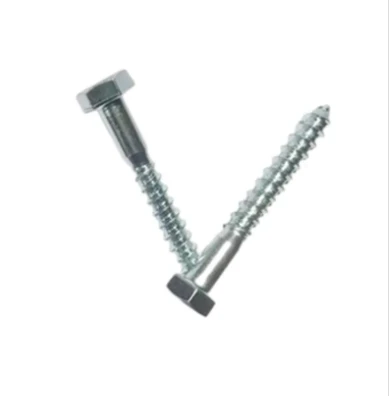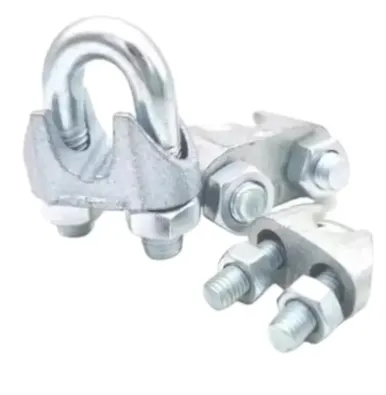Jan . 28, 2025 03:04 Back to list
anchor rod types
In construction and various industrial projects, anchor rods are critical components that ensure the stability and safety of structures. There are several types of anchor rods, each having specific applications based on their physical characteristics and the environmental demands they are subjected to. Understanding these types is crucial for engineers and construction professionals to make informed decisions that impact the safety, durability, and functionality of projects.
Material selection plays a pivotal role in the performance of anchor rods, influencing both their durability and compatibility with environmental conditions. Common materials include high-grade steel, stainless steel, and occasionally, non-metal options like fiberglass for specific environments. Steel is primarily favored for its strength and affordability, used widely in general construction. Stainless steel rods provide superior resistance to corrosion, suitable for marine or chemically aggressive environments. Using the right material is crucial in preventing structural failures due to environmental degradation over time. Special coatings and treatments, such as galvanizing, are often applied to anchor rods to enhance their resistance to corrosion and rust. Such treatments are essential in prolonging the life of the rods, especially in structures exposed to harsh weather conditions or industrial pollutants. For instance, galvanizing involves coating steel rods in a layer of zinc, providing a barrier against oxidation and ensuring long-term durability and reliability. Installation techniques and alignment considerations are also critical factors affecting the performance of anchor rods. Precise positioning during installation is necessary to achieve optimal load distribution and structural integrity. Standard procedures often include embedding the rods in concrete during the pouring stage, ensuring they are perfectly aligned and positioned to handle anticipated loads. Errors in alignment can lead to stress concentration points and eventual structural failure. Utilizing advanced tools and alignment jigs can mitigate such risks, enhancing the efficacy of the anchoring system. By understanding the nuances involved in selecting the correct type of anchor rod, their material composition, and adhering to recommended installation procedures, construction professionals can greatly improve the stability and longevity of their projects. Regular training on the latest advancements and techniques in anchor rod technology can further enhance the expertise and authority of professionals, ensuring they stay at the forefront of industry standards. Leveraging real-world experience and a deep understanding of engineering principles behind anchor rods can establish a construction company or engineer as a trusted authority in the field. As with any critical component, continual assessment and inspection of anchor rods throughout the lifecycle of a project ensure their ongoing effectiveness and the safety of the overall structure.


Material selection plays a pivotal role in the performance of anchor rods, influencing both their durability and compatibility with environmental conditions. Common materials include high-grade steel, stainless steel, and occasionally, non-metal options like fiberglass for specific environments. Steel is primarily favored for its strength and affordability, used widely in general construction. Stainless steel rods provide superior resistance to corrosion, suitable for marine or chemically aggressive environments. Using the right material is crucial in preventing structural failures due to environmental degradation over time. Special coatings and treatments, such as galvanizing, are often applied to anchor rods to enhance their resistance to corrosion and rust. Such treatments are essential in prolonging the life of the rods, especially in structures exposed to harsh weather conditions or industrial pollutants. For instance, galvanizing involves coating steel rods in a layer of zinc, providing a barrier against oxidation and ensuring long-term durability and reliability. Installation techniques and alignment considerations are also critical factors affecting the performance of anchor rods. Precise positioning during installation is necessary to achieve optimal load distribution and structural integrity. Standard procedures often include embedding the rods in concrete during the pouring stage, ensuring they are perfectly aligned and positioned to handle anticipated loads. Errors in alignment can lead to stress concentration points and eventual structural failure. Utilizing advanced tools and alignment jigs can mitigate such risks, enhancing the efficacy of the anchoring system. By understanding the nuances involved in selecting the correct type of anchor rod, their material composition, and adhering to recommended installation procedures, construction professionals can greatly improve the stability and longevity of their projects. Regular training on the latest advancements and techniques in anchor rod technology can further enhance the expertise and authority of professionals, ensuring they stay at the forefront of industry standards. Leveraging real-world experience and a deep understanding of engineering principles behind anchor rods can establish a construction company or engineer as a trusted authority in the field. As with any critical component, continual assessment and inspection of anchor rods throughout the lifecycle of a project ensure their ongoing effectiveness and the safety of the overall structure.
Next:


